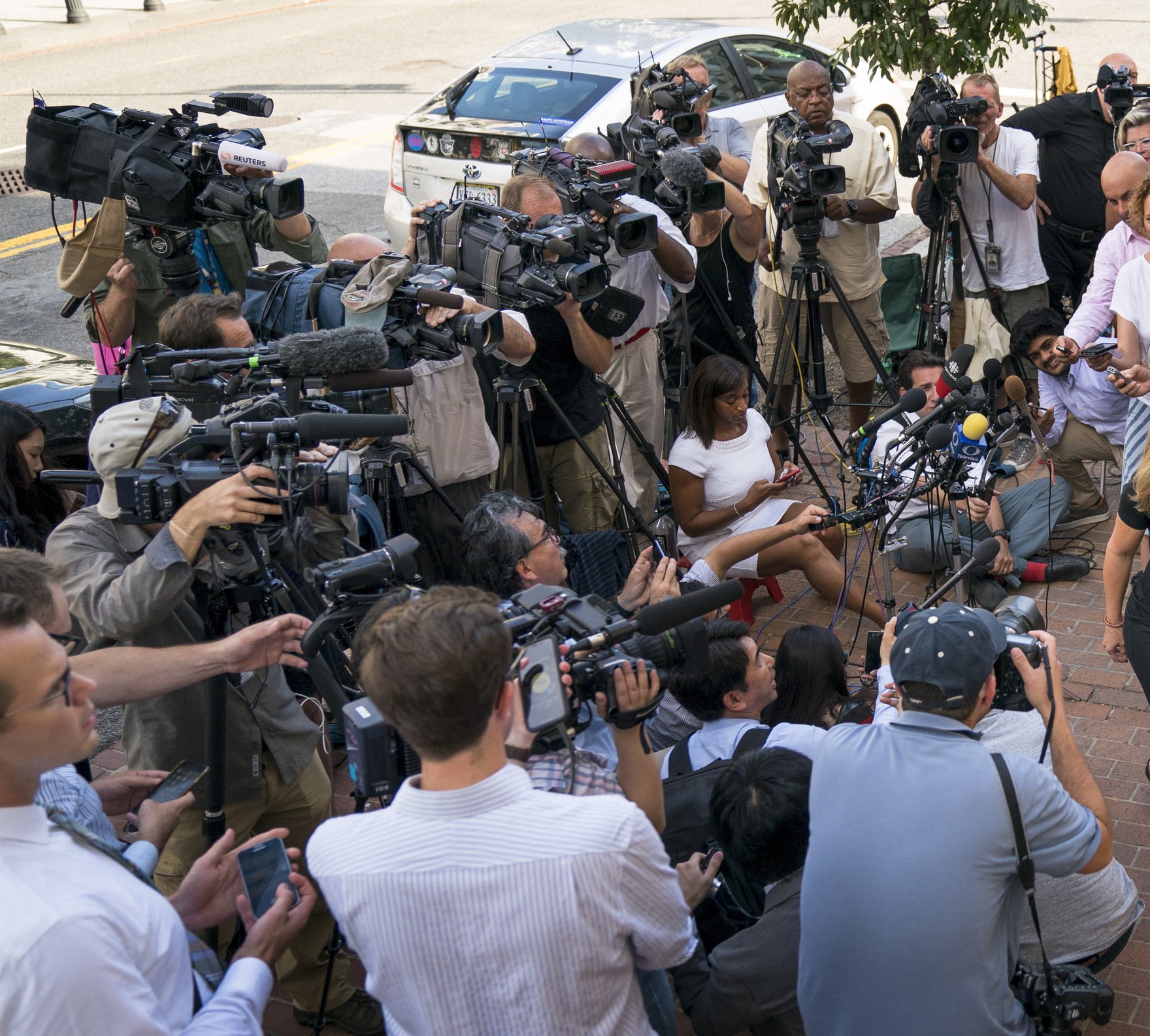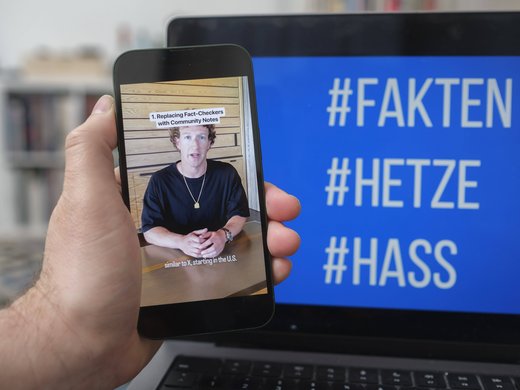It’s not hard to see why the so-called Momo Challenge captured so much public attention: the idea of a ghoulish creature appearing unbidden to children is the stuff of nightmares.
But the thing that should really be keeping us up at night is the way so many news outlets amplified the Momo rumours without any evidence of their veracity.
In case you missed it, the Momo Challenge involves a figure named Momo with dark, bulging eyes and a distorted smile appearing in the middle of children’s YouTube videos instructing young viewers to engage in escalating acts of destruction and self-harm. There is no conclusive evidence that such videos have caused harm to any children, or even that they exist — YouTube claims its internal investigation turned up “no recent evidence” of dangerous Momo videos. But that didn’t stop the story from going viral in the United Kingdom, the United States and Canada, peaking in early March.
This is not the first time Momo hysteria has spread through social media. Last summer, rumours circulated in Mexico, Argentina, Bolivia and India that a stranger identifying themselves as Momo was contacting unsuspecting children over WhatsApp. By September, the rumour arrived in North America.
However, the story didn’t catch mainstream attention here until recently, when a new version emerged, naming YouTube — a much more familiar medium for North American parents — as Momo’s platform of choice. Frantic posts from parents shared across social media were soon accompanied by warnings from local school boards and police departments, and even from Kim Kardashian West’s Instagram account.
But more troubling is the role of news outlets in amplifying the baseless story. Data analysis showed that “the biggest pusher of Momo theories on Facebook was local news stations,” NBC tech reporter Ben Collins wrote on Twitter. In Canada, some local news outlets credulously reported Momo sightings in Yorkton, Saskatchewan, and Waterloo, Ontario, on no other basis than testimonials from parents whose young children claimed to have seen it. Others briefly mentioned that the Momo Challenge may have been a hoax but continued to treat it as a potential threat regardless.
The Momo story reveals that more than two years after the 2016 US election introduced the concept of “fake news,” many news outlets are still poorly equipped to respond to online disinformation. One issue is that many reporters and editors have a limited understanding of how social media platforms work. For example, some stories claimed that Momo was being inserted into popular children’s videos by hackers, which is highly improbable, given the way YouTube’s video editing function operates. Others suggested that cybercriminals were using Momo to collect personal information, but why hackers would target children when there is no shortage of financial information about adults available for purchase on the dark web is anybody’s guess. Some of the dubious claims about Momo likely came from statements issued by official sources such as school boards or police services. Without a basic understanding of digital technology that would have allowed them to question these claims, some journalists simply repeated them.
While this particular hoax has already petered out, it is easy to see how a similar approach to covering “trending” online stories in the future could cause more lasting damage. Malevolent actors — both foreign and domestic — have used coordinated social media campaigns to garner mainstream media coverage for disinformation or conspiracy theories, with the goal of influencing the political conversation. Disinformation researcher Claire Wardle writes that these tactics “center around polluting the information ecosystem by seeding misleading or fabricated content, hoping to catch out journalists who now regularly turn to online sources to inform their newsgathering.” And there is reason to believe many journalists can be caught out: a 2017 survey of 59 American newsrooms found that most lacked the training and resources to identify or respond to online disinformation, and that the problems were particularly acute for small and medium outlets. If newsrooms ran with stories about Momo based on dubious social media posts, can those same newsrooms be counted on to provide real scrutiny to online rumours targeting political rivals or marginalized groups?
This matters, because mainstream news sources are still far more trusted than digital media. The latest Edelman Trust Barometer survey for Canada showed that trust in traditional media is now at 71 percent, while the level of trust of social media is 31 percent. People may see all kinds of rumours online, but they still count on traditional news outlets to separate fact from fiction.
Several researchers and organizations have been working to develop ways for journalists to navigate today’s complex and fast-moving digital media landscape and the deceptive falsehoods that lurk there. One strategy is to train reporters and editors in skills such as identifying falsified photos or documents, detecting bot accounts, and navigating platforms often used to plot disinformation campaigns, such as 4chan or Discord. A recent European Commission report recommended investing in technologies that newsrooms can deploy to detect manipulated media files and to map online networks that spread disinformation. News organizations could also be encouraged to collaborate to compare notes on questionable information and how to cover it, which would make them less likely to publish false or misleading information in a rush for fear of being scooped by their competitors.
Journalists today, in particular those in small, local newsrooms, are under unprecedented levels of pressure, as staffing shortages compound with a non-stop news cycle and a more complicated digital media ecosystem. But, with disinformation campaigns aiming to interfere with democracy and politicians openly disparaging journalism as “fake,” there is no excuse for rushing to publish stories based on social media trends without exercising the kind of due diligence that would be applied to other serious issues.
If journalists can be as easily influenced by political disinformation trending on social media as they were by Momo, the consequences could be truly frightening.




